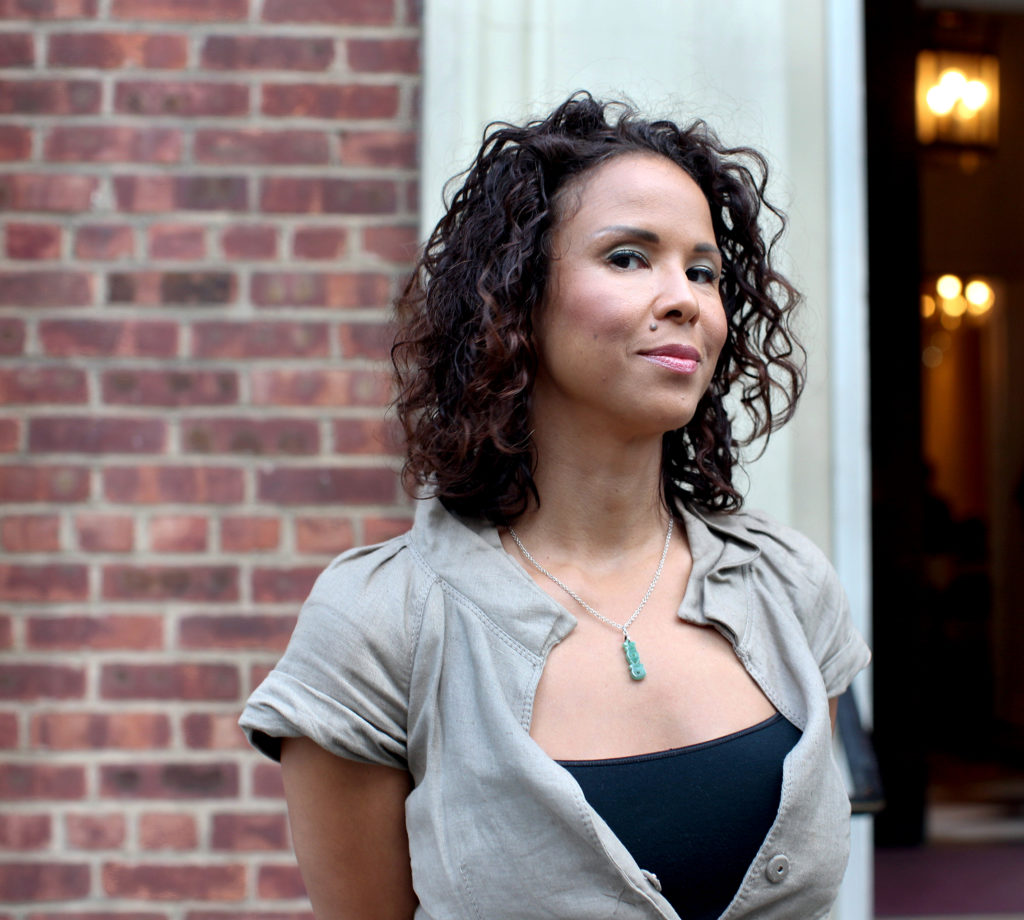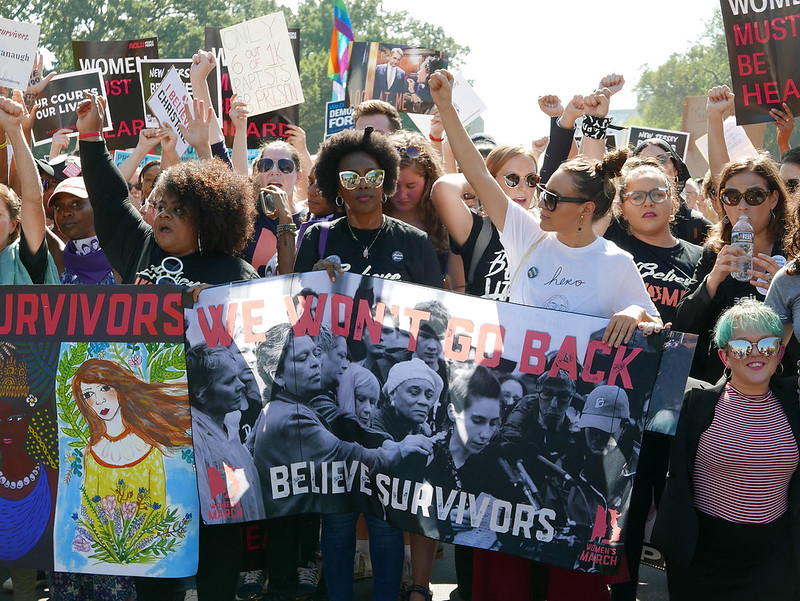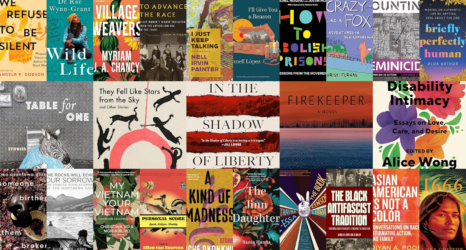
For the entirety of April, Sexual Assault Awareness Month, the United States will remain in a coronavirus-induced shutdown.
And while shelter-in-place orders have halted everything from public transportation to the Olympic games, sexual assault is one thing a national shutdown can’t put on pause.
The novel coronavirus has changed many aspects of everyday life—but for victims of gender-based violence, the social isolation and financial hardships that come with the pandemic can make it near impossible to escape abusers, says anti-domestic violence advocate Sil Lai Abrams.
This Sexual Assault Awareness Month, Ms. spoke with Abrams, who has served on the board of directors for victim services nonprofits Safe Horizon and the National Domestic Violence Hotline, to investigate the implications that COVID-19 could have for survivors.
Bella Dally-Steele: How has your work changed since you started social distancing?
Sil Lai Abrams: I’ve had to scale back on work due to COVID and for my own emotional wellbeing—as a result, work that I would normally do during a time like this has been limited. It has definitely shifted my mindset more towards self-care, which is unfortunate because I know that there are so many people in need and I want to be there for them. But I’m working on salvaging and building my own wellbeing.
One thing that I’ve noticed is in my conversations with people is that all of us are struggling; we need to be practicing self-care and finding ways in which we can soothe our minds, bodies and souls during this time frame. It’s important to note that my decision to prioritize self-care is something that was taught to me by other activists—it isn’t something that many of us are socialized to do, yet it’s so important to get us through this very challenging time.
BDS: Do you think the isolation of social distancing is changing the way Americans think about gender-based violence, if at all?
SLA: Unfortunately, even outside of the pandemic, it’s very challenging to get people to take gender-based violence seriously—and with everyone’s focus shifting to economics and survival, there is less bandwidth for these larger discussions around prevention and a rollback in preexisting services for victims and survivors.
Certainly, I recognize that everyone is going through their own personal issues, and I would never try to force people to get engaged in an issue because it’s important to me.
But at the same time, I think if we recognized how vulnerable a large part of our population is to violence, we’d realize it’s our part to hold people accountable and to shift the conversation.
For example, I’ve been noticing a lot of articles about the increase in domestic violence specifically, while simultaneously there’s been a lack of reporting on sexual violence—but they’re often interconnected. So, we need to not only have online conversations [about gender-based violence], but we need to include in those conversations the overlap of sexual violence with domestic violence.
BDS: As COVID-19 stretches on, how do you predict it will impact rates of gender-based violence in the United States?
SLA: I’m quite frankly terrified to think about the number of lives that are going to be lost in the fallout of COVID-19 for the next few years. As we see unemployment rates skyrocketing, there is a potential for an increase in sexual violence being perpetrated in the home by partners, since studies have shown that economic stress is a significant trigger for battering.
Unfortunately, right now we’re looking not just at what [abuse] is occurring during social distancing when victims are trapped in homes with perpetrators, we’re also looking at long term implications—like, how will victim-survivors be able to break free when there’s been a collapse of our economic system? If you can’t pay for your household expenses, how are you going to pay to move? You can’t flee to a friend— you’re essentially trapped.
BDS: When you say COVID-19 has long-term implications for gender-based violence, it sounds like any increase in violence could out-live the pandemic itself – how is that possible?
SLA: This pandemic exacerbates the existing economic inequality in our society. So, with what is anticipated to be a potential Great Depression: Part 2, its stands to reason that until the jobs exist, companies reopen and women are able to reenter the workplace (which enables them to get away from their abusers and get their resources to leave) it’s going to be very challenging for survivors to escape.
One of my concerns for post-COVID is that, even as the economy starts to rev up and jobs eventually return, the way in which we interact with each other may be permanently shifted. The likelihood of people opening up their homes and giving survivors a space to get back on their feet could be constrained by new social norms. This is one of the frustrating aspects of gender-based violence when we try to deconstruct how to address it during a global pandemic—it’s a Gordian Knot. If anything exemplifies the term intersectionality of oppression, this is it. Everything connects; whether it’s systemic racism, economic inequality, lack of representation in the government, social attitudes toward gender-based violence which largely blame victims… I could go on and on about how challenging an issue this is.

BDS: Do these novel circumstances reveal anything about public attitudes towards gender-based violence in the United States?
SLA: I think this reveals once again that we live in a cis-heteronormative, patriarchal society. Patriarchy and toxic masculinity help drive gender-based violence with a profound sense of entitlement that allows for the sanctioning of violence against women.
The pandemic reveals that this is not an issue that is prioritized in society—for example, the Violence Against Women Act has expired. It’s still providing some grants, but it’s at a stalemate.
Our government wasn’t taking this seriously pre-pandemic, so we can’t have this expectation that there would be some opportunity to fully address prevention during a time when circumstances increase the probability of violence. We’re kind of stuck.
BDS: The situation seems pretty grim. What steps can we take to prevent an increase in gender-based violence?
SLA: Most of the work that’s done [to prevent domestic and sexual violence] is done at an intervention level because those most invested in ending violence are those who are directly impacted by it. If intervention has been the primary way in which we deal with gender-based violence and that’s been cut off [due to COVID], the question becomes: how can we deal with it by prevention?
Pre-COVID-19, we had prevention organizations like A Call to Men which work to redefine masculinity, creating a healthy ideology around manhood, challenging men to become upstanders and to shift the attitude, thoughts and behaviors around this power overdymanic which drives violence against women. The idea behind these organizations is that this change needs to come from and be led by men—because if women and survivors who make up the majority of the activists and advocacy space were able to make the change, we would have done it by now with all the effort we’ve put forth.
Unfortunately, with the lack of funding, I’m seeing reports that people aren’t donating [to prevention organizations] because they’re conserving their resources because of their own uncertain future. So making a donation to intervention and/or prevention services, even if it’s $5, counts. NGOs are seeing their funding slashed while there’s an increased need for services—everything counts.
The coronavirus pandemic and the response by federal, state and local authorities is fast-moving. During this time, Ms. is keeping a focus on aspects of the crisis—especially as it impacts women and their families—often not reported by mainstream media. If you found this article helpful, please consider supporting our independent reporting and truth-telling for as little as $5 per month.





